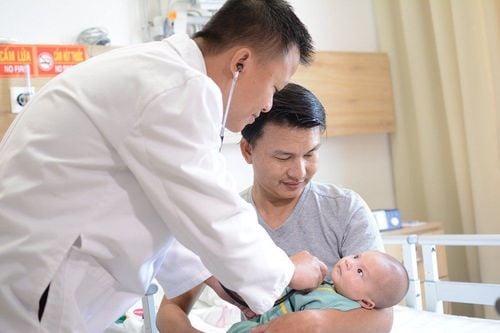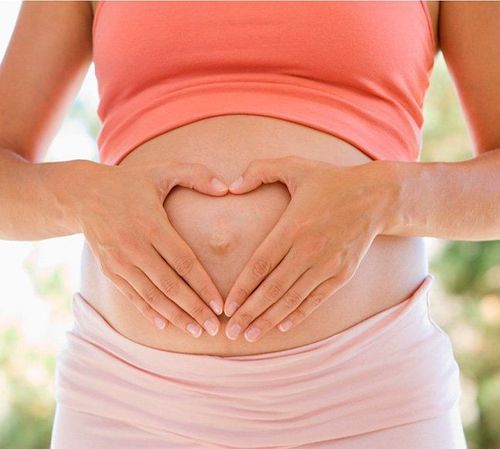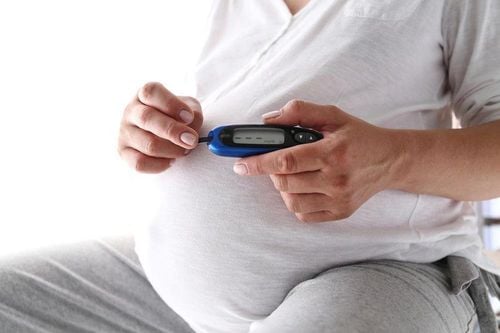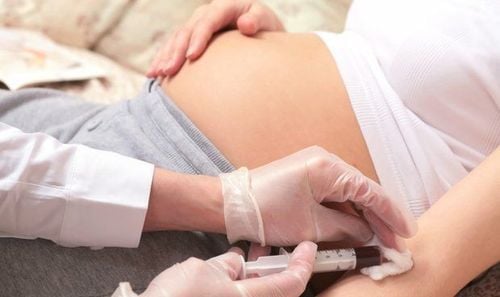This is an automatically translated article.
The article is professionally consulted by Specialist Doctor II Bui Minh Phuc - Department of Obstetrics and Gynecology - Vinmec Ha Long International Hospital.
Edward's syndrome is a rare genetic disorder in the fetus, caused by an excess of chromosome 18 in the genome. Children with this syndrome often have developmental delays and other serious birth defects.
1. What is Edward's syndrome?
Edward syndrome, also known as trisomy 18. This is an inherited disorder caused by an extra chromosome 18 in the genome. Normally, each baby will receive 23 chromosomes from the mother's egg and 23 from the father's sperm - 46 chromosomes in total. In the case of trisomy 18, the baby has three copies of chromosome 18. This causes many of the fetus's organs to develop abnormally.Trisomy 18 is the second most common trisomy syndrome, after trisomy 21 (which causes Down syndrome). About 1 in 5,000 babies is born with trisomy 18 and most are female. Children with Edward's syndrome are unlikely to survive birth, often with stillbirth or early death in the second or third trimester of pregnancy.
2. Mechanism of causing Edward's syndrome in the fetus
Most cases of Edwards syndrome are caused by problems with the formation of reproductive cells or during early fetal development. The fetuses diagnosed with Edward's syndrome all have 47 chromosomes due to an extra chromosome 18. It is this excess of genetic material that causes serious birth defects in the baby.There are three types of trisomy 18
Full Trisomy 18 : This is the most common type of trisomy 18. This type of trisomy will have three chromosomes 18, which are present in all cells in the baby's body. Partial Trisomy 18: The child has only one part of the extra chromosome 18. That part can be attached to another chromosome in the egg or sperm (called translocation). This type of trisomy 18 is very rare. Trisomy 18 mosaicism: The extra chromosome 18 is present in only some of the baby's cells. This form of trisomy 18 is also rare. The exact cause of this syndrome is not known at this time. The incidence increases with age of the mother (age 35 and older is at high risk), or the family history of a child with Edward's Syndrome.
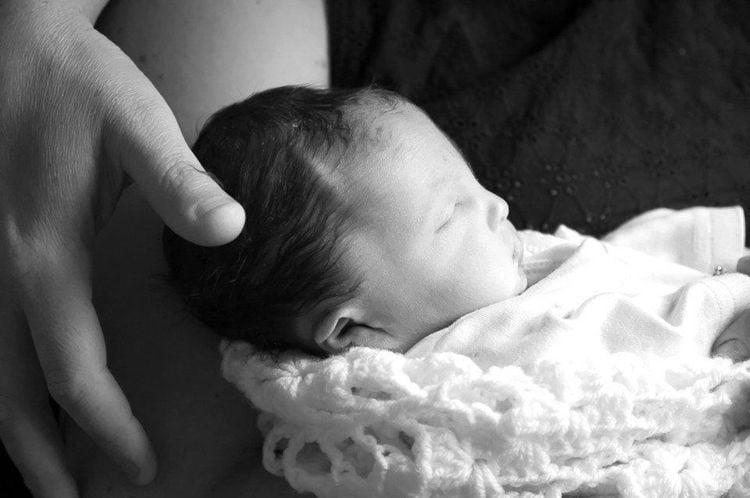
3. What are the symptoms of Trisomy 18?
Children with trisomy 18 are often born very small and sick, with many serious health problems and physical defects, including:Cleft palate Hands and feet twitching; the toes cannot be straightened Defects of the lungs, kidneys and stomach/intestines Deformed feet Internal organ problems such as esophageal atrophy, umbilical hernia, abdominal wall cleft, polycystic kidney,... heart defect, including a hole between the upper chambers of the heart (atrial septal defect) or the lower chambers (ventricular septal defect) Low set ears Severe developmental delay Chest deformity Slow growth Small head Small jaw Weak crying chili Split vertebrae
4. Diagnosis of Edward's Syndrome
It is possible to diagnose Edward's syndrome in the fetus with a fetal ultrasound, however this is not an accurate way to diagnose the condition. Your doctor can do other tests that are highly accurate including taking cells from the amniotic fluid (amniocentesis) or placenta (chorionic villus sampling) and analyzing their chromosomes.After birth, a doctor can diagnose trisomy 18 based on physical abnormalities from the baby's face and body. In addition, a blood sample may be taken from the child to look for chromosomal abnormalities. The chromosomal blood test also helps to determine if the mother can have another child with trisomy 18.
5. Is Edward's syndrome treatable?
Currently, medicine has not found a cure for trisomy 18. Treatments such as surgery or invasive procedures can only correct some of the problems associated with the syndrome, but it can. cause certain effects in babies born a few days or weeks old. Treatment for trisomy 18 includes supportive medical care to provide the child with the best quality of life possible.6. NIPT . test

Xét nghiệm NIPT được coi là “chìa khóa” an toàn “giải mã” dị tật thai nhi
This advanced technique is being deployed by Vinmec International General Hospital, which can bring outstanding improvements in prenatal screening results, help detect and intervene early for fetuses with anomalies. . It can be seen that, compared with maternal serum screening tests (Double test, Triple test), NIPT test brings much higher efficiency and safety, and reduces the percentage of pregnant women with indications. Amniocentesis is not necessary. The outstanding advantage of this method is that it is non-invasive, and can be performed as early as the 9th week of pregnancy with an accuracy of up to 99.9%.
Please dial HOTLINE for more information or register for an appointment HERE. Download MyVinmec app to make appointments faster and to manage your bookings easily.
Reference source: Webmd



